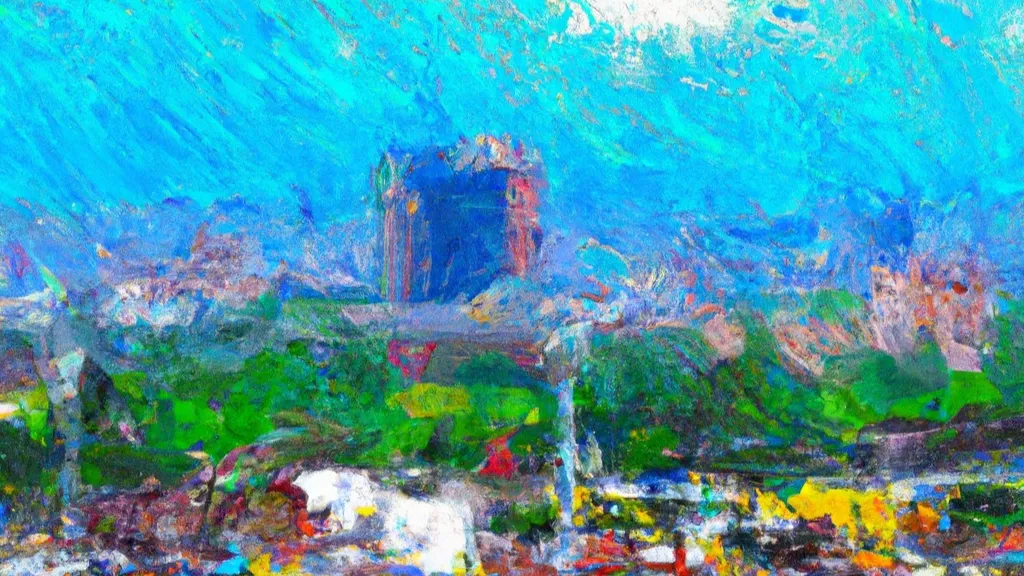
Pune: The Best Place to Live in India
Pune took the second spot in the last Ease of Living Survey, ranking after Bengaluru, one spot down from the numero uno position it held in the earlier report. But as most Punekars will tell you, the city is the best place to live in India. Pune ranks 1st in Sustainability among 100+ cities in India, ranks 3rd in Economic Ability and 6th in Quality of Life. This means except for Economic Ability where Bangalore ranks first in India, Pune beats Bangalore in the most relevant factors that make a city a great place to live: Quality of Life and Sustainability. In other words, Pune is the best place to live in India.
We look at different parameters that will help you decide whether it deserves the no. 2 spot or is it the best city to live in India (looking at other lists or if you are a Punekar).
Ease of Living Scores of Pune
In the Ease of Living Report 2020 bought out by the Ministry of Housing and Urban Affairs and authored by the Institute for Competitiveness, Pune scores 58.1 for Quality of Life (35% weightage to final score), 48.88 for Economic Ability (15% weightage to final score) and 75.74 for Sustainability (20% weightage to final score).
The Ease of Living score without considering the Citizen Perception Survey (which asked the city’s citizens what they think of it and has a 30% weightage to the final score) stood at 42.81. The Citizen Perception Survey scored the city 78.2, which took the weighted Ease of Living score to 66.27, ranking it just below Bangalore.
Let us look at how Pune ranks for each of the four components of the final Ease of Living score.
Pan-India ranking for Pune across the four Ease of Living Score pillars:
- Quality of Life: 6th place in India
- Economic Ability: 3rd in India
- Sustainability: 1st position
- Citizen Perception Survey: 38th place
Note: if you want to read more about these numbers and methodology, we have tried to cover them in our post on the Best Cities to Live in India. In case you are looking at numbers to collate something like the best places to retire in India, you can even look up the Ease of Living scores for each city in this post.
Weather in Pune
The first aspect we consider after the Ease of Living scores is the weather – something that is not covered in the Ease of Living Report likely due to it being a natural event outside human control. We have included the weather because it has a definite and critical role to play in the psychological temperament of the individual and consequently of the society at large – not to mention its economic fallouts. Let’s see if Pune’s weather helps it become the best city to live in India.

Grey Monsoon Clouds Above Pune Skyline
According to climate-data.org, Pune has a maximum average temperature of 37 °C during summer and 31.3 °C during winter. The minimum average temperature is around 20.8 °C in the hot summer and 15.1 °C during the cold winter. It receives approx. 47.1 inches of rainfall (1,199 mm) spread over around 95 rainy days in a year. The maximum average humidity is 88% in the summer which drops down to high 30s to low 40s in the winter.
The summer months usually last from March to June while the Monsoon lasts from July to September. The winter months start in October and end in February. You can also call February as spring season and October as the autumn.
Pune Weather Breakdown Around the Year
| Jan | Feb | Mar | Apr | May | Jun | Jul | Aug | Sep | Oct | Nov | Dec | |
| Avg. Temp °C (°F) | 21.7 °C | 23.7 °C | 26.5 °C | 28.6 °C | 27.9 °C | 24.9 °C | 23.1 °C | 22.8 °C | 23.2 °C | 24.2 °C | 23.3 °C | 21.8 °C |
| (71) °F | (74.7) °F | (79.7) °F | (83.5) °F | (82.3) °F | (76.8) °F | (73.5) °F | (73) °F | (73.8) °F | (75.5) °F | (74) °F | (71.2) °F | |
| Min. Temp °C (°F) | 15.1 °C | 16.8 °C | 19.1 °C | 21 °C | 22 °C | 22.3 °C | 21.6 °C | 21.2 °C | 20.8 °C | 20 °C | 17.7 °C | 15.6 °C |
| (59.3) °F | (62.3) °F | (66.3) °F | (69.8) °F | (71.7) °F | (72.2) °F | (70.9) °F | (70.1) °F | (69.4) °F | (67.9) °F | (63.8) °F | (60) °F | |
| Max. Temp °C (°F) | 28.7 °C | 31.3 °C | 34.5 °C | 37 °C | 35.5 °C | 29 °C | 25.6 °C | 25.4 °C | 26.9 °C | 29.2 °C | 29.3 °C | 28.4 °C |
| (83.7) °F | (88.4) °F | (94) °F | (98.7) °F | (95.9) °F | (84.2) °F | (78.1) °F | (77.7) °F | (80.5) °F | (84.6) °F | (84.8) °F | (83.2) °F | |
| Rainfall mm (in) | 1 | 2 | 3 | 10 | 26 | 247 | 340 | 270 | 189 | 81 | 26 | 5 |
| 0 | 0 | 0 | 0 | -1 | -9 | -13 | -10 | -7 | -3 | -1 | 0 | |
| Humidity (%) | 46% | 41% | 35% | 40% | 55% | 79% | 88% | 88% | 85% | 67% | 53% | 48% |
| Rainy days (nos) | 0 | 0 | 1 | 2 | 5 | 17 | 21 | 21 | 17 | 8 | 3 | 1 |
| Avg. Sun hours (hrs) | 9.8 | 10.2 | 10.7 | 11 | 10 | 5.8 | 4 | 4.1 | 5.2 | 8.6 | 9.5 | 9.6 |
Data: 1991 – 2021 Min. Temperature °C (°F), Max. Temperature °C (°F), Precipitation / Rainfall mm (in), Humidity, Rainy days. Data: 1999 – 2019: avg. Sun hours
These numbers more or less tally with the numbers of the India Meteorological Department. The links for all the data are given at the end under the Further Reading section at the end of the page.
There are certain points to consider, however. For instance, the maximum temperatures have been on an upswing like the rest of the country and the world. For instance, the mercury touched 44.4 °C (112 °F) on 11 May 2023 in the Koregaon Park area, higher than IMD’s recorded high of 43.3 °C (109.9 °F) up to 2012.
The rise of apartment complexes with questionable apartment designs in the newly developed areas and continual concretised growth in congested older colonies means the weather will play a more important role in your everyday life than before. Despite stories of Pune being a cool place in the summer in the days gone by, you will likely need an AC or two in your home – at least for the torrid summer months.
Pune also has a problem with dusty winds in April and May. These winds which come from Northwest India, the Middle East and Afghanistan via the north-westerly winds lead to a spike in pollution levels. Let’s look at this next.
Pune Pollution
Data collected by the Indian Institute of Tropical Meteorology (IITM) (which is based incidentally in Pune) for the 2013-2018 period shows a steady increase in Pune’s air pollution. The average annual concentration of PM2.5 had increased by around 60% over the period – jumping from 29 μg/m3 (μg is the unit for microns) in 2013 to 47 μg/m3 in 2018. India’s annual national ambient air quality standard for PM2.5 is 40 μg/m3, which is in itself much higher than WHO’s recommended 10 μg/m3.
PM2.5 particles, which are smaller than a hair’s breadth, can rapidly penetrate deep into airways, lungs and the respiratory system and can cause adverse health effects even at low levels.
Historical data from IQAir shows the following data for the years 2017-2022 for different cities in Maharashtra.
PM2.5 Concentration (μg/m³) for Cities in Maharashtra (2017-2022)
| Rank | City | 2017 | 2018 | 2019 | 2020 | 2021 | 2022 |
| 1 | Pune, India | 37 | 46.3 | 35.7 | 39.7 | 42.2 | 51.1 |
| 2 | Pimpri-Chinchwad, India | — | — | 35.9 | 41.4 | 45.6 | 50.1 |
| 3 | Alandi, India | — | — | — | — | 38.9 | 49.9 |
| 4 | Navi Mumbai, India | — | — | 61.6 | 52.6 | 56 | 49.3 |
| 5 | Kalyan, India | — | — | — | 47.1 | 55.7 | 48.5 |
| 6 | Nagpur, India | 56.2 | 46.6 | 47.2 | 27.1 | 35.2 | 46.8 |
| 7 | Mumbai, India | 54.2 | 58.6 | 45.3 | 41.3 | 46.4 | 46.7 |
| 8 | Borivli, India | — | — | — | — | 38.1 | 44.7 |
| 9 | Kupti, India | — | — | 34.2 | 28 | 31.1 | 40.7 |
| 10 | Solapur, India | 37.7 | 38.9 | 36.9 | 30.6 | 32.6 | 39.3 |
| 11 | Chandrapur, India | 44.8 | 41.4 | 35.1 | 32.2 | 47.5 | 35.1 |
| 12 | Nashik, India | 47.2 | 39.8 | 39.3 | 32.8 | 40.7 | 34.3 |
| 13 | Palghar, India | — | — | — | — | 18.3 | 19.4 |
Reference Guide for PM2.5 Concentration (μg/m³)
| 0-5 | 5.1-10 | 10.1-15 | 15.1-25 | 25.1-35 | 35.1-50 | >50.1 |
| Meets WHO Guidelines | Exceeds by 1 to 2 times | Exceeds by 2 to 3 times | Exceeds by 3 to 5 times | Exceeds by 5 to 7 times | Exceeds by 7 to 10 times | Exceeds by >10 times |
Infrastructure – Roads, Traffic, Connectivity
Pune like Bangalore is quite well known for its traffic. Yet despite it, both rank at the top on the best place to live in India list. Let’s see if this traffic is a deal breaker.
The TomTom Traffic Index 2022 ranked Pune in 6th place among the world’s most congested cities (Bangalore is in 2nd place). The average time to travel 10 km is 27 minutes and 20 seconds which is up from the previous year’s time by 1 minute 10 seconds. You are likely to spend 249 hours (i.e. 10 days and 9 hours) in rush hour traffic in a year and drive at an average speed of 19 kmph.
In comparison, if you are in Mumbai (which ranks at no. 47) you will take 21 minutes and 10 seconds to travel 10 km and you will have a faster average speed of 24 kmph. And of course, you will spend 190 hours (8 days less 2 hours) in traffic in Mumbai in a year.
Organic Growth Manifest in Pune Roads – Congested Centre with a Mesh of Roads
The traffic problem finds frequent mention in social media. Everyone from the Chief Minister of Maharashtra and CEOs of multinationals to ambulances and harried citizens have been victims of Pune’s jams.
The primary reasons for the traffic in Pune seem to be the lack of adequate traffic signals (and the uninterrupted functioning of those that exist), ongoing Metro Rail work, bad potholed condition of roads, hawkers on the roadside, and lack of parking spaces and consequent unauthorised parking. Inundated arterial roads during rains add to the woes.
Police officials and experts both mention the traffic signal problem as the chief reason why Pune congestion occurs. According to a paper citing police officials, as of 2017, there were 1,400 chowks in the city of which only 236 have traffic signals. The signals stop working during power cuts, which, in turn, throws everything into chaos.

People and Traffic on Shivaji Road, Pune
Though vehicle density does not seem to be much of a problem, a compound annual growth rate (CAGR) of 8% in vehicle population will definitely add to the problem in the coming years.
There is something else to keep in mind. Despite what experts and officials say, the traffic in the city has increased by 105 times since 1960 while the road network has grown merely 6 times over the same period.
The roadside conditions, more usage of two-wheelers and non-usage of helmets have also led to a rise in accidents. The Maharashtra State Emergency Medical Services has identified 10 trauma hotspots in Pune city. These are Swargate, Dattawadi, Katraj, Ambegaon, Aundh, Hinjewadi Phase 1, Pimpri, Vimannagar, Pune Cantonment and Keshavnagar near Kharadi.
One of the plus points over the last few years has been the Pune Metro. Ever since its launch in March 2022, it has seen an increasing adoption by Punekers. Over 20 lakh users travel on the metro each month. This number will increase in the years to come as the third line becomes operational by March 2025, and the first two lines are extended with the addition of more stations.
Only time will tell if these lines will reduce the traffic congestion to a noticeable extent. For instance, in Delhi NCR, the growth of the Metro did not make much of a noticeable difference in the long term.
Infrastructure – Electricity in Pune
Except for a few areas that see frequent power outages, uninterrupted power is not much of a problem in the city. This is however not the case in the summer months when the higher demand for electricity due to ACs causes frequent power cuts. Power outages occur more frequently in Balewadi and Baner. These areas saw 12-15 power cuts a day even during October as metro work, water lines and various public works such as the Smart City project damaged underground electricity cables.
One would think a Smart City project would mean the public works department units will learn to work together but it seems this remains a pipedream across India. A cursory reading of news reports makes you feel that blame game seems to be an everyday occurrence among the civic authorities in Pune.
Other areas that face frequent power cuts include Aundh, Jambhe, Kharadi, Perne, Pimpri, Ravet, Sakalnagar, Uruli Kanchan and Wagholi. Even the Chakan and Bhosari MIDC areas face outages, especially during summer months. Back in May 2023, news outlets reported that industries in Chakan reported a loss of ₹350 crore in just 12 hours due to Pune power cuts. Not a great thing to happen to help Pune become the best city to live in India.
What this Means for You
This means you either need power backup where you stay and work. If you live in standalone apartments or older areas without 24×7 power backup, you will need an inverter for home and for work if you are working from home.
Healthcare in Pune
The city ranks 1st in the list of eight cities covered by the real estate portal, Housing.com, in its 2021 report on the state of Indian Healthcare. The report estimates the number of beds per 1,000 people in the city at 3.5.
The India Fit Report 2020, published by the fitness tracking company GOQii, ranks Pune 5th in overall health rankings among 16 Indian cities.
For reference, if you look at the numbers for Maharashtra, the state ranks 7th in Niti Aayog’s Health Index, with a score of 69.14, though the state ranks higher for health outcomes (5th rank). The Governance and Information ranking puts the state at 13th in the country among all states and UTs. It is likely that these numbers will hold true even for the second-largest city of the state.
Best Hospitals in Pune
A simple Google search of the best hospitals usually throws up these names:
- Aditya Birla Memorial Hospital
- Columbia Asia Hospital
- Deenanath Mangeshkar Hospital
- Hardikar Hospital
- Inamdar Multispeciality Hospital
- Jehangir Hospital
- KEM Hospital
- Kotbagi Hospital
- Manipal Hospitals
- Noble Hospital
- Pawana Hospital
- Punawale Multispeciality Hospital
- Ruby Hall Clinic
- Sahyadri Hospital
- Sana Hospital
- Sancheti Hospital
- Shree Hospital
However, like all internet searches in such matters, these should be taken with a grain of salt. The best hospital for you will likely differ from the list above.
Nonetheless, the fact that so many good hospitals exist does help Pune’s case as one of the best cities to live in India or even as one of the best places to retire in India.
Education in Pune
Historically, Pune has been a centre of culture and learning. Some of the more important figures in Maharashtra history have called the city their home. They set up and promoted various learning initiatives and educational schools and colleges. Bal Gangadhar Tilak founded the Deccan Education Society in 1884 and Fergusson College in 1885. Most Indians know of the yeomen service of Jyotirao and Savitribai Phule in furthering education as a fundamental right for everyone. The city’s College of Engineering Pune (COEP) is the third oldest engineering college in Asia.

University of Pune Main Building
The work and influence of leading cultural, educational and political luminaries propel the learning environment of the city even in the 21st century. Pandit Jawaharlal Nehru was so impressed with the number of quality educational and research institutes in the city, that he gave it the sobriquet ‘Oxford of the East’ during a visit in the late 1950s.
Schools in Pune
Schools in the city have benefitted immensely from the focus primary and secondary education has received in Pune for the last two centuries.
The schools mostly operate under three boards: the Maharashtra State Board of Secondary and Higher Secondary Education State Board, CBSE and CISCE. The medium of instruction is Marathi in the public schools with English and Hindi additionally used in private schools.
If we consider rankings, the 2023 EducationWorld school rankings across India rank Army Public School, Southern Command, Pune as the 3rd best Central Government school in the country. Both Elpro International School of Chinchwad and the Kalyani School rank at 34th spot in Day school rankings while DPS Pune takes 71st place. Sanskriti School takes the 75th place while Bishops School Kalyani Nagar takes the 82nd spot.
The rankings also put Loyola High School as the 12th best Boys’ Day School in India while St Joseph High School Pashan takes the 21st rank in Girls’ Day schools. The rankings additionally put Pune’s Sahyadri School 5th and RiverDale International School 16th on the list of the top co-ed boarding schools in India.
Despite the supposed equality rankings bring, we need to consider that they do not show the full picture. But overall, the schools in Pune do seem to have a somewhat positive feedback. A cursory reading of internet searches indicates that the overall schooling environment in Pune is likely a notch above what you can expect in most other cities in the country. This may have to do with the history of the city and the city’s focus on education or just plain old competition among the institutions.
Other Facts About Pune Schools
Also, a few other facts to help you if you are planning to move to Pune and looking at schools for your children.
The UWC Mahindra College, one of the eighteen United World Colleges, an international initiative with the vision to make education a force to unite people, nations and cultures, is located near Pune. The city’s Jnana Prabodhini Prashala is the first school for intellectually gifted and talented students in India.
Pune is also seeing the rise of alternative schooling. Two schools: Sapling Diya – The Montessori Academy, and DLRC in Baner find mention in a list of alternative schools in India on the internet.
Pune Colleges and Universities
Pune has 10 universities, with its primary university (named after social reformer and educationist Savitribai Phule) being the largest in India in terms of affiliated colleges. The city sees an influx of students from all over the country and even abroad, who pursue courses in various institutions.
Pune is also supposed to be the largest centre for Japanese learning in India. Some of the well-known colleges and institutions include:
- Armed Forces Medical College
- B. J. Medical College
- Film and Television Institute of India (one of only three Indian institutions in the global CILECT film school network)
- Indian Law Society’s Law College
- Lalit Kala Kendra (SPPU campus)
- National Defence Academy (NDA)
- Symbiosis International University and its many well-ranked institutions including Symbiosis Institute of Business Management, Symbiosis Institute of Computer Studies and Research, etc.

National Defence Academy, Sudan Block
The city also has a number of governmental and non-governmental research institutes, including among others institutes such as:
- Automotive Research Association of India (ARAI)
- Centre for Development of Advanced Computing (C-DAC
- Defence Research and Development Organisation (DRDO)
- Indian Institute of Tropical Meteorology (IITM)
- National Institute of Virology (NIV)
- National Insurance Academy (NIA)
- Tata Research Development and Design Centre (TRDDC)
The presence of so many esteemed organisations does help Pune’s cause as the best city to live in India.
Housing in Pune
Pune scores over 70 (out of 100) in the Housing and Shelter score of the Ease of Living Index.
The city is administered by the Pune Municipal Corporation. The Pimpri-Chinchwad Municipal Corporation looks after the town of Pimpri-Chinchwad located around 15 km north-west of Pune.

Amanora Park Town – Residential Township Project in Hadapsar, Pune
The population of Pune Urban Agglomeration was estimated at over 50 lakh in 2011. The city has seen population growth numbers of well over 20% every decade since 1891-1901 (the only outlier was the 1901-1911 decade which saw an increase of 3.6%). Despite the perplexing tardiness of the Census Department to come out with the 2021 census (which is further postponed to happen after the 2024 General Election), the numbers for the years after 2011 will likely keep pace with the consistent 20%+ decadal growth in the city.
The increasing influx has seen the rise of Pune from a quiet town of the 1970s-1980s to a buzzing metropolis. Some of the larger builders in the country have built projects in the city to meet the housing demand.
Here are the property rates for a 3BHK for rent and purchase in the top localities of Pune:
Property Rates in Pune for a 3BHK for Rent and Purchase
| Locality | Rent | Purchase |
| Magarpatta City | ₹30,000 – ₹50,000 | ₹1.3 – ₹2 Cr. |
| New Kalyani Nagar | ₹30,000 – ₹50,000 | ₹1.4 – ₹2.2 Cr. |
| Shivaji Nagar | ₹35,000 – ₹60,000 | ₹1.5 – ₹2.5 Cr. |
| Koregaon Park | ₹35,000 – ₹60,000 | ₹1.5 – ₹2.5 Cr. |
| Kothrud | ₹35,000 – ₹60,000 | ₹1.6 – ₹2.6 Cr. |
| Kalyani Nagar | ₹40,000 – ₹70,000 | ₹1.8 – ₹3 Cr. |
| Erandwane | ₹40,000 – ₹70,000 | ₹1.8 – ₹3 Cr. |
| Viman Nagar | ₹45,000 – ₹75,000 | ₹1.9 – ₹3.1 Cr. |
| Senapati Bapat Road | ₹50,000 – ₹80,000 | ₹2.2 – ₹3.3 Cr. |
| Aundh | ₹50,000 – ₹80,000 | ₹2.2 – ₹3.3 Cr. |
| Boat Club Road | ₹60,000 – ₹90,000 | ₹2.5 – ₹3.5 Cr. |
| Baner | ₹60,000 – ₹90,000 | ₹2.5 – ₹3.5 Cr. |
Premium Localities in Pune
According to the property website, 99Acres, here are the premium localities in Pune if you want to rent or buy a property:
- North Pune: Clover Park, Mhada Colony, Pimpri, Pune Mumbai Highway, Sakore Nagar, Tingre Nagar, Viman Nagar and Vishrantwadi
- East Pune: Bhosale Nagar, Eon Free Zone, Ghorpadi, Hadapsar, Kalyani Nagar, Kharadi, Koregaon Park, Koregaon Park Annexe, Magarpatta, Shastri Nagar, Sopan Baug, Wadgaon Sheri and Wanwadi
- West Pune: Anand Nagar, Aundh, Balewadi, Baner, Baner Pashan Link Road, Bavdhan, Karve Nagar, Kaspate Vasti, Kothrud, Laxman Nagar, Mahalunge, Mamurdi, Patil Nagar, Paud Road and Pimple Nilakh
- South Pune: Bibwewadi, Bibwewadi Kondhwa Road, Katraj, Kondhwa, Lullanagar, Mohamadwadi, Nanded, NIBM, Pune Satara Road, Salunke Vihar, Undri and Wanowrie
- Central Pune: Boat Club Road, Erandwane, Model Colony, Prabhat Road, Sangamvadi and Shivaji Nagar
Most residential areas usually have all infrastructure facilities such as emergency services, recreation and entertainment venues and so on. Nonetheless, the vibe of a place comes out different to different people. As such, it is always better if you rent a place a Pune for a year or so if you want to relocate to the city. This should give you ample time to understand which places are best suited for you and which are best avoided.
Arts and Culture
The presence of an educated population has allowed Pune to have a rich and vibrant art and culture scene.
The annual Dastakari Bazaar, an event that showcases art, craft and textiles from across India is held at the Monalisa Kalagram located in Koregaon Park in November. The annual BACARDÍ NH7 Weekender music festival takes place in December. Music festivals with international and Indian participants are regular events in the city.
Places like the Mahatma Phule Sanskrutik Bhavan at Wanawadi Gaon, Nehru Memorial Hall at Pune Cantonment, Bal Gandharva Rang Mandir at Shivaji Nagar, and the Lalit Kala Kendra, Centre of Performing Arts at Ganeshkhind regularly hold plays, music and dance performances, and other events. The Sawai Gandharva Sangeet Mahotsav is an annual Indian Classical music festival that has been held in Pune since 1953.

Aga Khan Palace
The city has a large number of museums vis-à-vis other cities. Some of these include Raja Dinkar Kelkar Museum, Shivaji Maharaj Museum, Maratha History Museum, Tribal Museum, Joshi’s Museum of Miniature Railways, Vikram Pendse Cycle Museum, Blades of Glory Cricket Museum, Mahatma Phule Vastu Sanghralaya, Darshan Museum, Aga Khan Palace and the Gandhi National Memorial Society.
If you love art, then you can explore Vesavar Art Gallery, Bliss Art Gallery, Darpan Art Gallery and Renaissance Art Studio, which hold regular exhibitions. The Gyaan Adab Cultural Centre finds special mention by Punekars and travellers for its exhibitions, art events, poetry sessions and its library.
We will not mention malls and shopping here as being a metropolis, Pune is filled with older and newer shopping areas. Malls, shopping complexes, movie theatres, restaurants, etc. are an easy reach from every neighbourhood in the city.
Conclusion: Is Pune the Best Place to Live in India?
The answer to this question is more likely to be yes than no. Even if we ignore the Ease of Living numbers for Quality of Life and Sustainability, one of the key positives for Pune has been its strength as a centre for education, arts and culture. Its history has been a source of pride for the local population and Mahrashtrians. Even people from outside the city who have settled here over the decades due to work or otherwise have given it their heart and soul and take pride in calling it their home. A sizeable presence of IT and other professional working populations means Pune will likely remain the centre for knowledge-based employment, a proven foundation for any city to thrive. You cannot go wrong in choosing Pune, though you should look at areas that have better road and electricity infrastructure.
References
Images (Wikimedia Commons)
Further Reading
- Pune weather data at Climate-data.org
- IMD – State-wise Climatological Table 1981–2010
- IMD – Sunshine Hours (Daily Normals of Global & Diffused Radiations)
- IMD – Extremes of Temperature and Rainfall upto 2012
- Pune – Koregaon Park Temperature on 11 May 2023
- Pune Traffic Ranking – Pune Ranks 6th in the World Worst Traffic
- Pune Traffic Problems & Control Measures – Shivatare, Dalvi, Patil, Shete; SCSCOE College of Engineering
- List of Alternative Schools in India
- Chang et al. Journal of Open Innovation: Technology, Market, and Complexity (2018)
- Simmie & Lever. Introduction: The Knowledge-based City. Urban Studies (2002)



